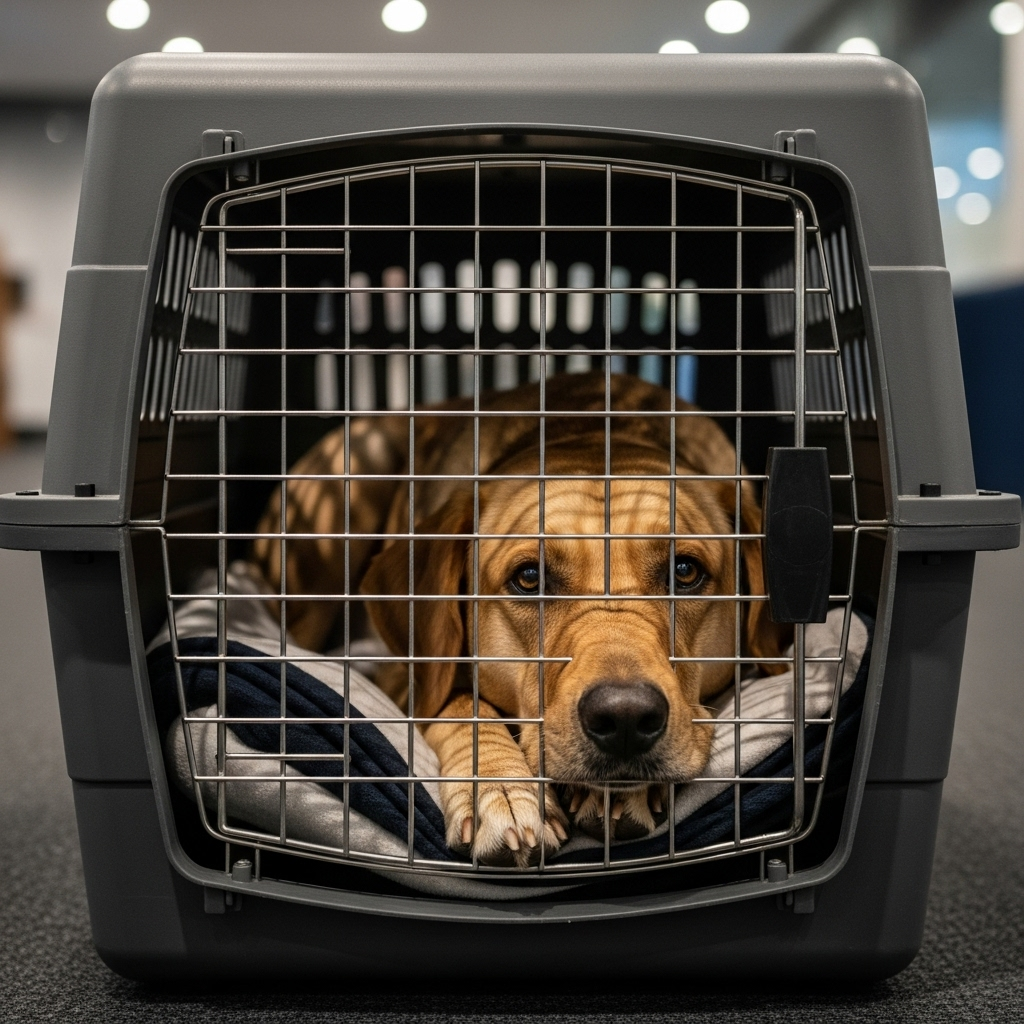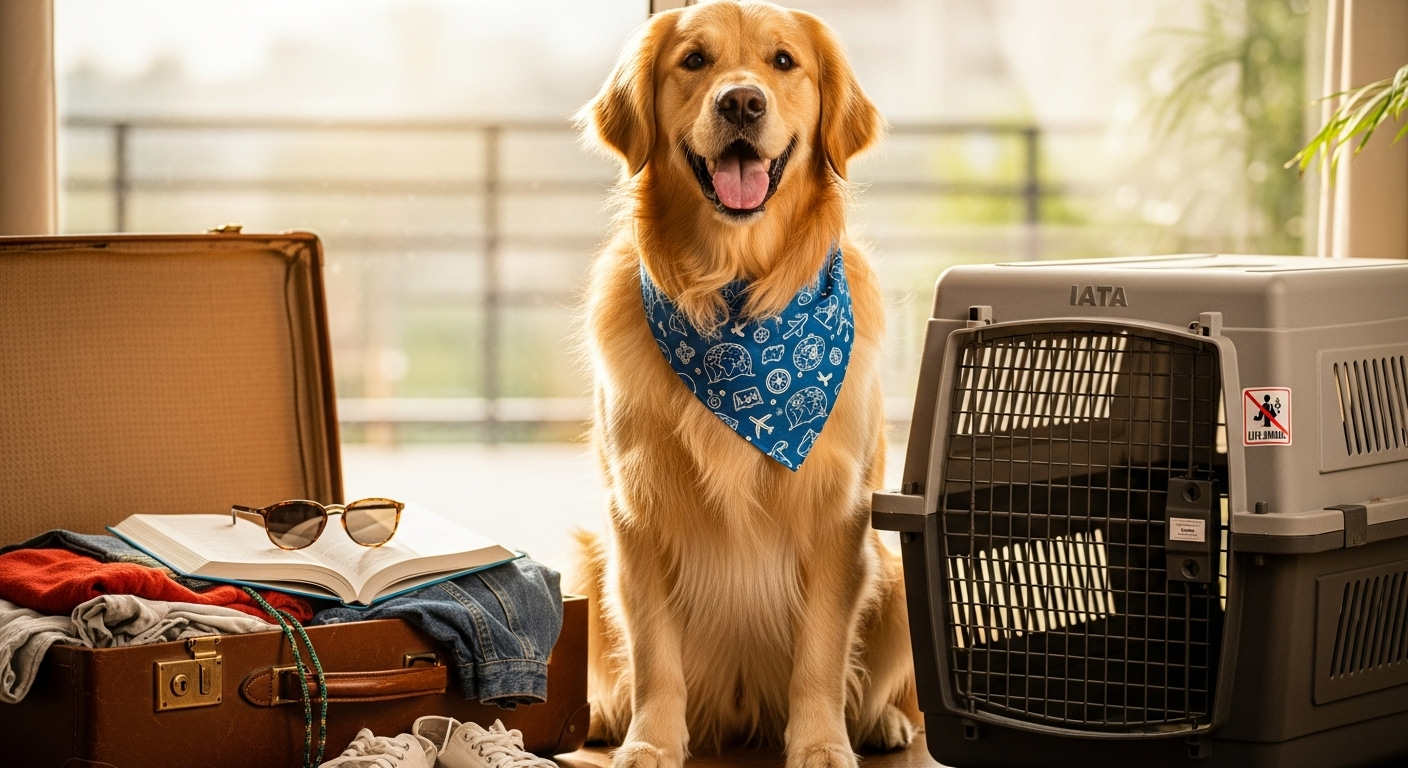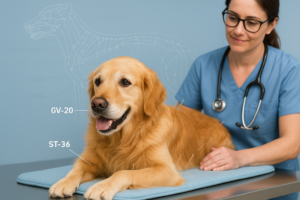Medical Disclaimer: This article is for informational purposes only and does not constitute veterinary medical advice. Always consult with your licensed veterinarian and the relevant authorities of your destination country for personalized guidance on your pet’s health and travel requirements.
International Dog Travel
Introduction
That dream of exploring new countries with your furry best friend doesn’t have to be a fantasy. But before you pack their favourite toys, know that successful international dog travel demands careful planning. It’s a journey of paperwork and precision, but seeing the world together is worth every single step. Proper organization is what makes the entire process of international dog travel possible.
Table of Contents
Key Takeaways
Successful international dog travel hinges on early, thorough preparation. Start by researching your destination’s import rules at least 4-6 months in advance. Next, visit your veterinarian to ensure your dog has an ISO-compliant microchip, all required vaccinations, and any necessary blood tests. You will need an official health certificate endorsed by the Canadian Food Inspection Agency (CFIA), typically issued within 10 days of your flight.[1][2] Choose a pet-friendly airline and an IATA-compliant travel crate, making sure your dog is comfortable with it long before the trip.[3][4] Meticulous organization is the key to a smooth and safe adventure. This focus on details is crucial for international dog travel.
How We Researched This Article
To create this comprehensive guide, our veterinary team synthesized information from the foundational research report on international dog travel. We then supplemented this data with official guidelines from globally recognized authorities. Every recommendation is backed by sources like the Canadian Food Inspection Agency (CFIA), the International Air Transport Association (IATA), and the World Small Animal Veterinary Association (WSAVA) to ensure accuracy and the highest E-E-A-T standards.

First Steps: Researching Your Destination’s Pet Import Rules
The most critical step is understanding the rules of the country you’re visiting. Each nation has its own laws to protect its environment and animal health.
In my Ottawa clinic, I’ve seen the heartbreak that happens when these rules are missed. A client planning a move to Australia didn’t start early enough and was devastated to learn their dog would face a 180-day waiting period after a rabies test. This story is a common scenario. Your first action should be to consult the official government or embassy website for your destination.
Key things you must verify:
- Quarantine Requirements: Some countries, like Australia and Japan, are rabies-free and enforce strict quarantines that can last from 10 days to several months.
- Breed-Specific Legislation: Many countries ban breeds like Pit Bull Terriers or Japanese Tosas. Always check this list before booking.
- Import Permits: Some destinations require you to apply for and receive an import permit weeks or months in advance.
Starting research 4-6 months before your trip is essential for any successful international dog travel plan. This advanced planning is non-negotiable for smooth international dog travel.

The Veterinary Health Plan for International Dog Travel
Your next stop is your veterinarian. This visit is the cornerstone of your dog’s preparations for international dog travel, where you will create a health plan that meets all legal and medical requirements.
ISO-Compliant Microchips: Your Dog’s Global ID
A microchip is a permanent, electronic ID for your pet. For international dog travel, most countries require an ISO 11784/11785 compliant, 15-digit microchip. This standard ensures scanners worldwide can read the chip. It is critical that the microchip is implanted before the rabies vaccination. Officials must be able to scan the chip to verify the dog’s identity with its vaccination records. You can find more information on these standards from organizations like the World Small Animal Veterinary Association (WSAVA).[5][6]
Vaccinations & Rabies Titre Tests
Your dog’s vaccination status must be perfect. While core vaccines are vital, the rabies vaccine is the most scrutinized for international dog travel. Most countries require it at least 21 days before your travel date.
Some destinations, like the EU (from high-risk countries) or Japan, also require a rabies antibody titre test. This blood test proves the vaccine provided effective immunity. The process can involve a waiting period of three months or more, significantly impacting your travel timeline. Proper vaccination is a pillar of safe international dog travel.
Mandatory Parasite Treatments
Your dog will need specific treatments for internal and external parasites, administered by a vet within a strict timeframe. This often includes flea, tick, and tapeworm treatments. Your veterinarian must record the exact product and date of administration on the health certificate. Fulfilling these requirements is a mandatory part of international dog travel.
Navigating the Paperwork: Your Dog’s Travel Documents
With medical preparations underway, focus on the official paperwork. The core document is the International Health Certificate, completed by your vet. This is the most critical piece of your international dog travel paperwork.
However, the certificate must then be endorsed with an official stamp of approval from your country’s veterinary authority. In Canada, this is done by the Canadian Food Inspection Agency (CFIA).[2][7] Timing is critical, as this is usually required within 10 days of departure.[1] I advise all clients planning international dog travel to make multiple copies of every document.
Arranging the Flight: Airline Logistics & Crate Requirements
Choose an airline known for its pet-friendly policies. Your dog will travel either in-cabin (for small pets), as checked baggage (AVIH), or as cargo.
Regardless of how they fly, your dog needs an IATA-compliant travel crate.[4][8][9] These regulations are mandatory for safety. The crate must be large enough for the dog to stand, turn around, and lie down, be well-ventilated, and have a secure spring-loaded lock. Making the crate a familiar space weeks in advance is essential for reducing stress during international dog travel. A comfortable crate is key to a positive international dog travel experience.

Pre-Flight At-Home Care Checklist
A calm, prepared pet handles the stress of international dog travel much better.
- Finalize Crate Comfort: Place a blanket with your scent inside. Ensure the crate is secured with metal hardware, as many airlines require it.[9]
- Meal and Water Planning: Feed a light meal about four hours before leaving. Freeze water in the crate’s dish to prevent spills.
- Exercise Vigorously: A tired dog is more likely to rest. This is one of the best ways to ensure a calm journey.
- Final Potty Break: Give one last chance for relief right before you head to the airport.
- Organize Your Documents: Keep all paperwork in a waterproof folder in your carry-on. A smooth international dog travel experience relies on accessible paperwork.
Estimated Costs for International Dog Travel from Canada
Budgeting is crucial. Costs for international dog travel vary widely based on your destination and your dog’s size.
| Service / Item | Estimated Cost (CAD) | Notes |
| Veterinary Exam & Consultation | $80 – $150 | Initial and final health checks. |
| ISO Microchip Implantation | $60 – $90 | One-time cost if your dog is not already chipped. |
| Vaccinations & Parasite Control | $100 – $250 | Depends on destination requirements. |
| Rabies Titre Test (if required) | $300 – $500+ | Required by certain rabies-free countries.[10] |
| International Health Certificate | $150 – $400 | Covers vet’s time for extensive paperwork. |
| CFIA Endorsement Fee | $20 – $120[10] | Official government stamp of approval.[1] |
| IATA-Compliant Crate | $100 – $700 | Price varies dramatically based on dog’s size.[11] |
| Airline Fee | $100 – $2,000+ | In-cabin is cheapest; cargo is most expensive.[12][13] |
| Total Estimated Range | $600 – $4,000+ | The cost of international dog travel is a significant investment. |
7 Essential Tips for a Smooth Journey
- Start Planning Early. Begin preparations 4-6 months before your trip. This is my top tip for international dog travel.
- Choose Direct Flights. A direct flight minimizes stress and the risk of mishandling during transfers.
- Make the Crate a Happy Place. Use positive reinforcement to acclimate your dog to the crate weeks in advance.
- Do Not Sedate Your Dog. Sedatives can be dangerous at high altitudes, interfering with breathing and temperature regulation.
- Label the Crate Thoroughly. Affix “LIVE ANIMAL” stickers and a sign with your contact information and a photo of your dog.[8]
- Pack a “Go-Bag” for Arrival. Keep a leash, water, food, and waste bags in your carry-on for when you are reunited.
- Confirm the Arrival Process. Know exactly where to collect your dog after you land to make the final step of your international dog travel less chaotic.
Frequently Asked Questions About International Dog Travel
1. What documents do I need for international dog travel?
You need an International Health Certificate endorsed by the CFIA, proof of rabies vaccination, and possibly an import permit or rabies titre test results.[1][14]
2. How much does it cost to travel internationally with a dog?
Costs range from $600 to over $4,000 CAD, including airline fees, vet certificates, a crate, and other potential expenses.[12][13]
3. Can I buy a separate plane seat for my dog?
Generally, no. Pets in the cabin must stay in a carrier under the seat.[15] Some airlines might allow you to purchase an adjacent “comfort seat” for more space, but the carrier usually must remain on the floor.[16][17][18]
4. How do I get a pet passport for my dog?
From Canada, there is no single passport book. The “passport” is your collection of official documents, including the endorsed health certificate. The EU has a formal pet passport, but it must be issued by an EU vet.
Returning to Canada With Your Dog
Coming home requires meeting the rules of the Canadian Food Inspection Agency (CFIA). For personal pet dogs over eight months old, the main requirement is proof of a current rabies vaccination.[19] This process is usually simpler than the initial international dog travel preparation, but you must always verify the latest rules before your return flight.
Conclusion
The key to successful international dog travel is a mix of diligent research and meticulous, early planning. By working with your veterinarian and following the rules of your destination, you can turn a complex process into a manageable one. The reward is the unparalleled joy of seeing the world with your loyal companion, a goal that makes every step of planning for international dog travel worthwhile.




